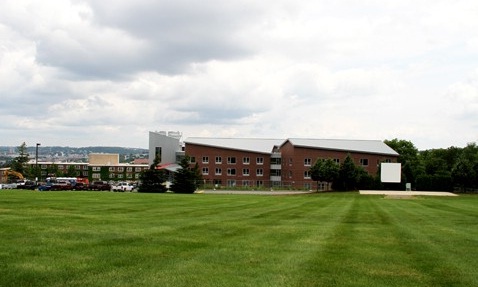
Photo: College of the Holy Cross. Retrieved from: unknown source.
The College of the Holy Cross, also known as Holy Cross, is a private undergraduate liberal arts college known for its demanding academic programs and its Roman Catholic roots. The institution is considered an elite school and is one of the six colleges that are said to rival the Ivy League in terms of academic excellence. Along with Boston College, Fordham University, Georgetown University, Notre Dame University and Villanova University, Holy Cross is informally called one of the “Catholic Ivies”. Standardized test scores are not required for admission.
This institution has an offering of over 27 majors in science and mathematics, humanities, social science, and arts. The opportunities to extend learning outside the classroom are limitless, with the many extracurricular activities to partake in, including hobby clubs and athletics.
While many students in Holy Cross are moderately competitive, friendly and relaxed, they’re all candidates for distinction through an honors program geared towards finding the undergraduates that perform best in their chosen majors. The program is highly selective and is limited to 36 students in each of the sophomore, junior, and senior classes. The honors program includes an honors colloquium and a thesis. Students that qualify are able to present the results of their thesis in the annual academic conference, which is considered a great privilege for an undergraduate.
School History
The school opened 1843 and Rev. Thomas F. Mulledy, who also served as a president of Georgetown University, was its first president. Initially, a handful of students varying in age from 9 to 19 years old were admitted. In three years, the admission has increased and more than a hundred students applied. The curriculum was more geared towards the elementary and high school levels. Its transition to a high level institute came much later. The first graduation included James Augustine Healy, who graduated valedictorian along with the several of his peers in 1849. He is recognized as the first African-American bishop in the United States.
A charter for the college was repeatedly rebuffed by the state Legislature, due in part to the anti-Catholicism sentiment at that time. A charter was finally given to the college in 1865 by Governor John A. Andrews. Over the years, Holy Cross continues to campaign for funds, which are then used to improve the facilities, provide financial aid through grants to students, and renovation of historic buildings.
Campus Life
With over 100 student-run organizations in the school, life at Holy Cross is never boring. Clubs usually originate from an idea or a common interest among a group of students. Some of the lively ones include the Ballroom Dancing and the WCHC Radio Station. The Office of Student Affairs encourage students to come up with their own ideas for clubs and organizations, and most get permission to expand on campus. Athletic life is big in Holy Cross, and many students are involved in intramural and club sports.
Freshman students are offered lodging in one of the residence halls located very near the hilltop. There is another freshman housing facility near the center section of campus. Upperclassmen draw lots during spring to determine which residences they can live in during the semester. Residents in these dormitories become very close and often form clubs and organizations based on their common interests.
Like most universities and colleges, there is a cluster of apartments in Holy Cross that everyone wants to live in. The apartments in Williams Hall represent the best residence a Holy Cross undergraduate can stay in, with separate shower room, kitchen and living spaces. Each apartment has two bedrooms.
Students of Holy Cross are a fun-loving bunch, which has led to the continuance of many school traditions, like Pub Night, Stickball, Spring Weekend, 100 Days Dance, Cape Week and Purple Pride Day.
The majority of the students receive financial aid from the institution, in a package that may include scholarships and grants, student loans, and work-study options. Approximately half of this population receives Holy Cross scholarships. The application for aid is simple, and in the end, the package for each student that applied for aid is comprehensive. Usually, 100% of the need of the student is met.
